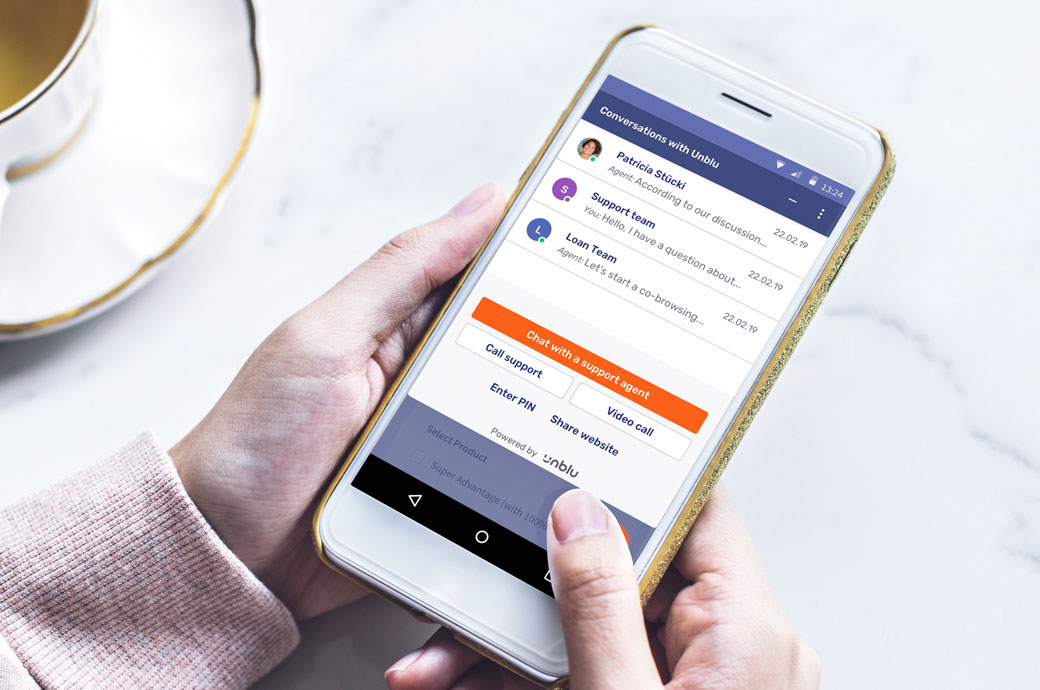Convenience is the linchpin of modern customer service, representing a key value driver for any business or industry able to successfully leverage it. The financial services sector is no different, demonstrated by the meteoric rise of digital banking.
Mobile apps have become an integral part of the banking services offering, with 89% of customers using mobile banking regularly – rising to 97% if you only consider millennials. AI tools such as smart speakers are experiencing a similar uptake in popularity across the world.
However, convenience alone isn’t enough to guarantee a customer experience that drives satisfaction. Take for example the satisfaction rate with chatbot-only self-service solutions, which is around 66% according to The Financial Brand. If you add an option to escalate to a customer service representative when necessary, the satisfaction rate rises to 66%.
This is an important statistic as it demonstrates the importance of convenience as part of a holistic service offering. Convenience is only valuable if it matches the level of service that customers or clients require at that moment in time. The more difficult the query – such as applying for a loan online – the harder it is to maintain convenience. In situations like this, customers need extremely tailored advice that can be challenging to deliver even over phone or video calls.
General Co-Browsing best practices for financial services
There are two options open to customers for complex transactions. The first is to physically go to the branch to receive the level of service they need in person. However, this is far from convenient, especially as more branches close. The other option is to implement Co-Browsing software that enables advisors to join customers within their browsing session, interacting and collaborating with them in real-time online.
A Co-Browsing solution has clear benefits from a sales point of view. By introducing a visual context, advisors are quickly able to see what the issue is and guide the customer through complicated processes, offering guidance at points where they might otherwise leave the site – or drop off. Co-browsing therefore reduces abandonments and improves conversion rates.
Co-Browsing technology also empowers customer service advisors to resolve customer issues more quickly while personalizing the experience, with advisors able to tailor guidance to each individual customer. Customers are far more satisfied than if they were encountering an impersonal automated service. However, as with any tool, the way you use it can have a dramatic impact on its effectiveness.
- Know when to launch
Co-Browsing is a high-touch collaborative tool, which means that launching a session too early in the customer journey can have an adverse effect on the experience. If a customer wants simple information, directing them to a self-service platform can be more beneficial. When introducing Co-Browsing to your customer support team, ensure that your agents receive the necessary training.
- Level up, seamlessly
In many other instances, it can become clear that the conversation needs more support than initially thought. Whether on a Live Chat channel, during a phone call, or other similar chat interactions, make sure the escalation to Co-Browsing is as smooth and seamless as possible. The software itself makes this possible as it never requires downloads and can be launched even within a financial institution’s restricted environment.
- Show don’t tell
As a customer service agent, it may seem natural to give detailed instructions as you would over the phone. With Co-Browsing, the visual element allows you to approach the situation in new ways. In general, instead of telling customers what to do, it’s better to show them. This means that customers see how it is done right before their eyes. Not only does this visual experience clear the issue up faster and reduce the average resolution time but it also reduces repeat problems as customers learn how to solve problems themselves.
- Shout about security and compliance
Co-Browsing tools are much safer than screen sharing or many other alternatives, such as Skype, Zoom, etc. During every interaction, the field masking function should be enabled, which protects the customer’s personal information by blurring important personal details for the advisor – even when screen recording is taking place. Security measures like these are vital, but it’s just as important to make sure that the customer knows. Don’t be shy about letting them know what security measures are in place to boost trust, especially with sensitive customers.
- Seize the moment
Capitalize on the potential of Co-Browsing to prevent drop-offs by engaging at just the right moment, rescuing a customer who might otherwise be in danger of abandoning. You can also encourage customers to respond to calls-to-action or guide them towards a sale. By stepping in to help customers at a tricky stage of the process, advisors can improve conversion rates.
- Turn support into sales
The Co-Browsing function can be used in conjunction with other features like audio or video chat to expand the opportunities for meaningful connections with customers. This level of attention will continue to improve the customer experience. During these enhanced exchanges, advisors can also use the customer’s higher level of satisfaction as a springboard for cross-selling or upselling and boost sales conversions.
Leverage the correct features for specific situations
While Co-Browsing is the catch-all term for collaborative browsing, its specific collaboration tools can be applied to a variety of situations. For each of these scenarios, advisors or customer support agents can use different functions to ensure the best experience possible.
Before we explore the main types of Co-Browsing, it’s important to know what’s possible within a session. To enhance the collaboration potential, every Co-Browse session has full whiteboard features – which are available in every context. With the whiteboard, either party can draw, highlight, color, or use other tools to better illustrate the point at hand.
Embedded Co-Browsing
Embedded Co-Browsing is the flagship Co-Browsing solution, defined by its ability to run even behind secured areas such as client portals. With security such a pressing concern, being able to assure the customer or client that their information is always protected promotes trust and allows the session to move forward.
Embedded Co-Browsing represents the top end of what’s possible with security, using the same secure connection that has already been established with the client. It only works on the website in question or the pages of the web application. No other information is shared with the agent or advisor. This solution is perfect for when privacy and security is a top priority as it offers maximum peace of mind.
Document Co-Browsing
While security is paramount in every situation, the conversation is not always going to take place in a gated area such as a client portal or app. At other times, the advisor and client may simply need to review a document together.
Document Co-Browsing caters to this eventuality, allowing each party to view and highlight sections of the document or edit it for enhanced communication. With Document Co-Browsing, the participants can fill out PDF forms and then download them to the active conversation thread. It’s also possible to co-browse and interact with MS Office documents.
Universal Co-Browsing
For the broadest collaboration freedom, the agent or advisor can launch a Universal Co-Browsing session. This will take place outside of a secure area and allows both parties to browse the internet together and look at specific web pages.
Unlike screen share, you have the option to set who controls the session, whether the client, advisor, or both – or curate access lists. As with other Co-Browsing solutions, there is full capability to mark and highlight what you see to ensure a seamless experience at all times.
Co-Browsing goes beyond replicating in-person experiences to actually offering an enhanced opportunity for collaboration with a fully browser-based technology. When implemented well, it can boost customer satisfaction, customer loyalty, and drive revenue into the long term.
Want to learn more? Book a demo and one of Unblu’s team members will reach out to help.




 Interaction Management Hub
Interaction Management Hub Secure Messenger
Secure Messenger Video & Voice
Video & Voice



